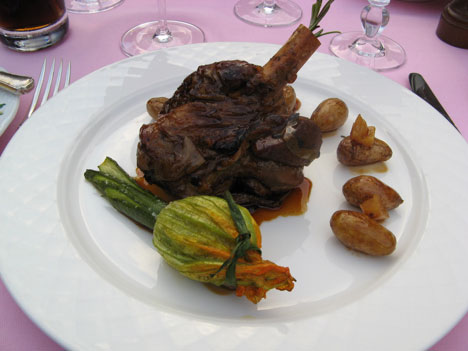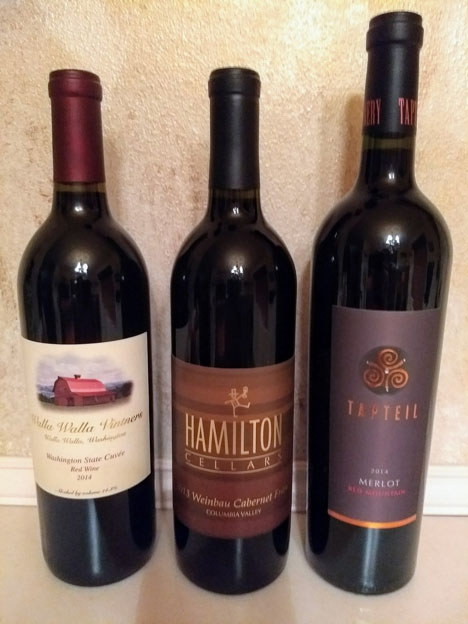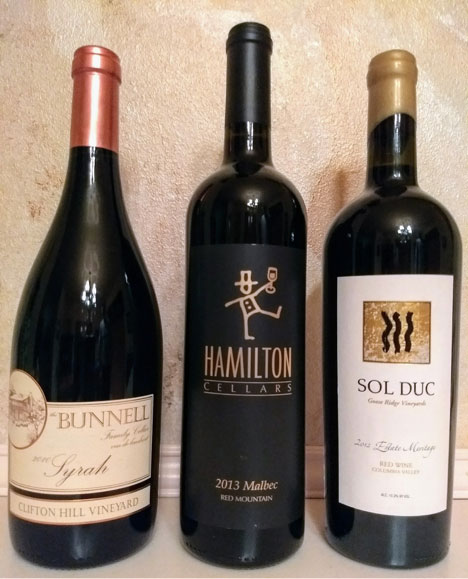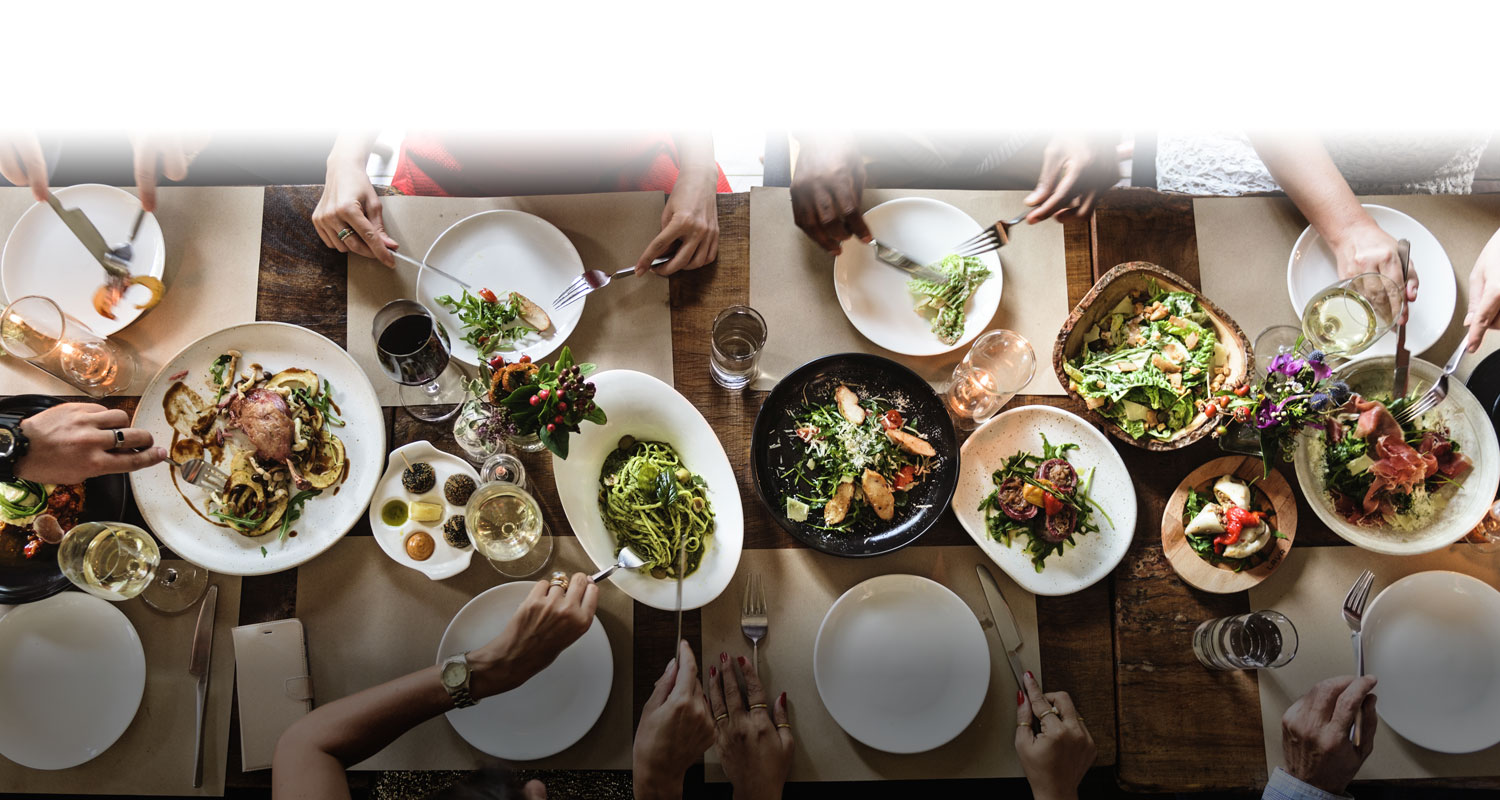Pairing Wine with Lamb
Lamb and red Bordeaux is a classic match, but it’s not the only game in town.
By Bob Harrington
The spring season and Easter traditions provide great reasons for enjoying lamb. While Western Washington is known for an abundance of fresh fish and seafood, Eastern Washington is known for abundant agriculture, wine grapes and livestock production as the primary source of protein.

Lamb shank Osso Bucco. (Photo courtesy of Nina Ottenbacher).
In the Pacific Northwest, Idaho has the largest Basque population of any state in the country. Many of these settlers are sheepherders, conducting lamb operations and having lamb and mutton in their diets.
As always, the preparation method is an important factor in determining a wine to pair with lamb, along with personal likes or dislikes. Lamb and red Bordeaux is regarded as a classic match.
In many parts of France’s Bordeaux region, sheep gaze off the grasses in the vineyards, theoretically enhancing a sense of terroir in the finished lamb. Winemakers in Bordeaux use a blending strategy (rather than single varietal) and the side of the Garonne River that the wine originates from determines the prominent varietal used in the wine. It also determines the ultimate body style of the wine.
For instance, appellations on the cooler ‘Right Bank’ of the Garrone River generally are merlot dominant while those on the ‘Left Bank’ are more likely to be Cabernet Sauvignon dominant. These differences impact a sense of match and can be used to fit with the dish preparation in terms of flavor intensity, types and body.
The lamb shank in the accompanying photo is prepared in the Italian Osso Bucco style. This braising method lends itself to pairing possibilities with a range of great reds (keeping with the Italian theme – try one of the Italian varietals produced in Washington – Dolcetto, Barbera, Sangiovese or Nebbiolo).
Below are simpler lamb preparations for the home cook with some recommendations of wine to pair with those preparations.
When pairing wine with lamb, I look at three main characteristics. First, one of the strongest indicators of match sensation is the old adage “red wine with meat and white wine with fish.” This has nothing to do with the color of the wine, per se, but creating equal partners in a body-to-body relationship.
Second is the wine tannin and food fattiness relationship. The natural fattiness in lamb helps to smooth or soften the perception of tannin in wine, making it appear more mature. Meanwhile, tannic wines help to cleanse the palette of a fatty mouthfeel and prepare you for the next bite.
The final consideration in matching wine and lamb is considering the wine and food flavor intensities and creating either complementary or contrasting flavor combinations.
Two lamb preparations that are always enjoyable are roast leg of lamb and grilled lamb chops. Consistent ingredients for these preparations include fresh herbs (frequently mint, thyme or rosemary), olive oil, Dijon mustard, garlic, and salt and black pepper. This combination can be applied as a “rub” or marinade. If you use a marinade, additional liquid can be useful. A bridging effect of adding wine (preferably the wine used for pairing) will enhance the sensation of match.
The main difference between these final lamb dishes will be the increased sense of body or texture for the grilled lamb chops due to the grilling process. More of the lamb surface comes in content with the radiant heat source, creating more texture, smoky flavor and increasing the need to pair with a more full-bodied wine.

Walla Walla Vintners’ 2014 Washington State Cuvee, Hamilton Cellars’ Weinbau Cabernet Franc and Tapteil Vineyard’s 2014 Merlot.
Roast leg of lamb.
Assuming you are preparing a rub of herbs, garlic, olive oil and salt and pepper, then roasting the leg of lamb to an internal temperature to medium or medium rare, serving a red wine that is of a moderately-full body style (such as Merlot-forward Bordeaux-style blends) or single varietals such as Cabernet Franc or Merlot, would be good choices.
Washington wines I recommend pairing with this preparation of roast leg of lamb are:
2014 Washington State Cuvée, Walla Walla Vintners ($35-$40 price range). An enjoyable Bordeaux blend with aromas of tart cherries, dark berries, and smoke. Smooth and medium tannins with flavors of spice. It has a touch of acidity that would allow you to add some lemon zest to the lamb rub.
2013 Weinbau Cabernet Franc, Hamilton Cellars (about $35). The Weinbau Vineyard is well-respected for quality Cabernet Franc fruit. This is one of my favorite Cab Francs with red fruit, blueberries and it’s well-balanced using both French and American oak. The fruit flavors, smooth tannins and balanced oak pair well with roasted lamb and create contrasting layers of flavors to the black pepper, garlic and mint seasoning.
2014 Merlot, Tapteil Vineyard, Red Mountain (about $38) – Interesting flavors of faint floral and ripe berries. Its profile is concentrated, lush, and balanced. A beautiful Washington Merlot example. The lush, concentrated flavors and body provide a great counter-balance to roasted lamb.

Three wines that pair nicely with grilled lamb chops: Bunnell Family Cellars’ 2010 Clifton Hill Vineyard Syrah, Hamilton Cellars’ 2013 Malbec Red Mountain and Goose Ridge Estate Winery’s 2012 Estate Meritage Sol Duc.
Grilled lamb chops.
With a similar rub or marinade, the additional grilled texture would lend to pairing with single varietals such as Malbec, Petit Verdot, Syrah, Cabernet Sauvignon or Cabernet-forward style blends.
I recommend the following wines to pair with grilled lamb chops:
2010 Clifton Hill Vineyard Syrah, Brunnell Family Cellars (about $42) – One of my favorite restaurants in the region is Wine O’Clock in Prosser with Susan Bunnell as the operator. Besides the great food and atmosphere, the Bunnell wines are also an important draw. Ron Brunnell has been described as a “master of the Rhone” – his take on Syrah is a great reason for this designation. This example provides a complementary match of herbs on the nose and an elegant and balanced wine to match the intensity of the grilled lamb.
2013 Malbec Red Mountain, Hamilton Cellars (about $42) – Red Mountain is creating a reputation for its quality Malbec. This example is no exception; full-bodied and flavors of black cherries, pepper and chocolate with balanced tannins and acidity. The grilled chops are substantial enough to be an equal partner in this relationship with complementary (pepper) and contrasting (garlic and herb) flavors.
2012 Estate Meritage, Sol Duc, Goose Ridge (about $50) – with 50% Cabernet Sauvignon, 23% Malbec, 20% Merlot and 7% Petit Verdot – this is a big, Bordeaux blend. Dark fruits, licorice and spice provide contrasting flavors, the strong tannins and toasty oak complement the grilled lamb and are tamed by it.
Note: If you are interested in food and wine pairings, please consider attending this Spring’s event on April 14th called “Crimson Food and Wine Classic” at Hamilton Cellars on Red Mountain. The event is a fundraiser to support programs in Hospitality and Wine Business Management at the WSU Tri-Cities campus. For information contact, Robert Harrington at rharrington@wsu.edu.
EDITOR’S NOTE: Dr. Robert Harrington is Professor in Hospitality Business Management at the Washington State University in the Tri-Cities. He is the author of the book, “Food and Wine Pairing: A Sensory Experience.” His current teaching and research interests include food and drink pairing, creating memorable experiences and culinary innovation.


